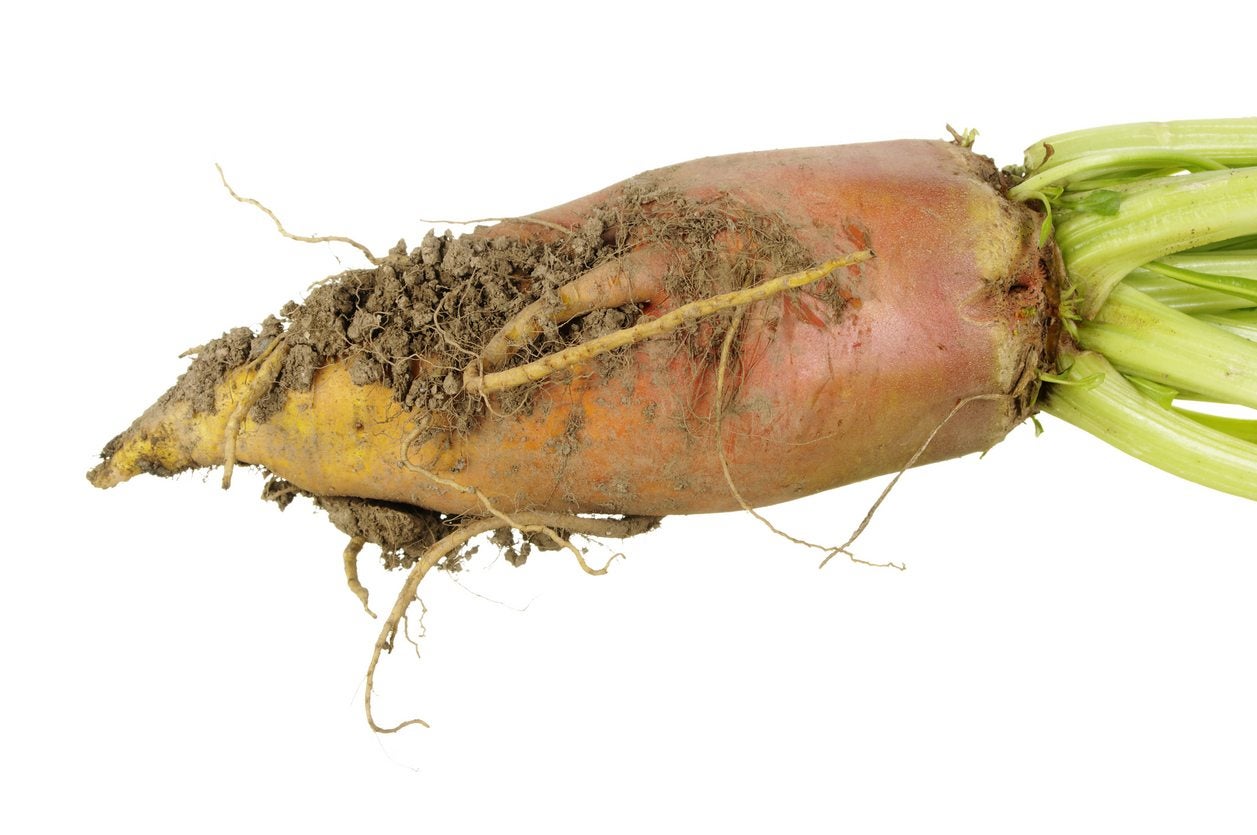Growing Mangold Plants – Learn About Mangold Vegetables

Have you ever heard of a mangel-wurzel, otherwise known as a mangold root vegetable? I must confess, I have not but it appears to be steeped in historical confusion due to its name. So, what is a mangold and how do you grow mangold vegetables? Read on to learn more.
What is a Mangold Root Vegetable?
Mangel-wurzel (mangelwurzel) is also referred to as mangold-wurzel or simply mangold and hails from Germany. The word ‘mangold’ means “beet” and ‘wurzel’ means “root,” which is exactly what mangold vegetables are. They are often confused with turnips or even “Swedes,” the British term for rutabagas, but are, in fact, related to the sugar beet and the red beet. They tend to be larger than regular beets, however, and reddish yellow in color. Mangold root vegetables were primarily grown for animal fodder during the 18th century. That isn’t to say the people don’t eat them as well. When eaten by people, the leaves are steamed, and the root is mashed like a potato. The roots are also often shredded for use in salads, juices, or even pickled and are packed with vitamins and antioxidants. The root, also known as the “Scarcity Root,” can be used to make a healthful tonic by juicing the root and adding oranges and ginger. It has even been used to brew beer. Lastly, the most curious and amusing thing about the mangold vegetables is their inclusion in a British team sport of mangel-wurzel hurling!
How to Grow Mangold
Mangolds thrive in soil that is high in composted material and has steady irrigation. When this is the case, the roots become soft and flavorful with a sweet flavor like beets. The leaves taste akin to spinach and the stems are reminiscent of asparagus. You won’t be growing mangold plants in the tropics. Optimal conditions for growing mangold plants tend to be on the cool side. They take from four to five months to reach maturity and, in some instances, can attain weights of up to 20 pounds (9 kg.). Mangolds are propagated via seed, which can be stored for later use in the refrigerator for up to three years and still maintain viability. Select a site in the garden with full sun to partial shade. Prepare a mound or raised bed with at least 12 inches (31 cm.) of loose, well-draining soil. If your soil is dense, work in some aged compost. You can plant in early spring or early fall when soil temps are 50 degrees F. (10 C.), and daytime temps are 60 to 65 degrees F. (15-18 C.). Sow the seeds 2 inches (5 cm.) apart, down ½ inch (1 cm.). Thin the seedlings when they are around 2 inches (5 cm.) tall with a final spacing of 4 to 8 inches (10-20 cm.). Mulch around the young plants to retain moisture and retard weeds. These cool weather plants grow best in moist soil so provide them with at least an inch (2.5 cm.) of water per week depending upon rainfall. Plants will be ready to harvest in about five months.
Gardening tips, videos, info and more delivered right to your inbox!
Sign up for the Gardening Know How newsletter today and receive a free copy of our e-book "How to Grow Delicious Tomatoes".

Amy Grant has been gardening for 30 years and writing for 15. A professional chef and caterer, Amy's area of expertise is culinary gardening.
-
 Looking For Plants To Give You The Soft And Fuzzies? Try These 5 Fuzzy Leaf Plant Options
Looking For Plants To Give You The Soft And Fuzzies? Try These 5 Fuzzy Leaf Plant OptionsLovers of texture, drama, silver foliage and tactile plants will adore these special sensory garden additions. These fuzzy leaf plant options will leave you all aglow
By Susan Albert
-
 Get Ready For A Summer Of Hummers! Grow These Full Sun Hummingbird Plants and Flowers
Get Ready For A Summer Of Hummers! Grow These Full Sun Hummingbird Plants and FlowersIf you’re lucky enough to enjoy a sunny backyard, make sure you are maxing out on your pollinator opportunities and grow these full sun hummingbird plants and flowers
By Tonya Barnett